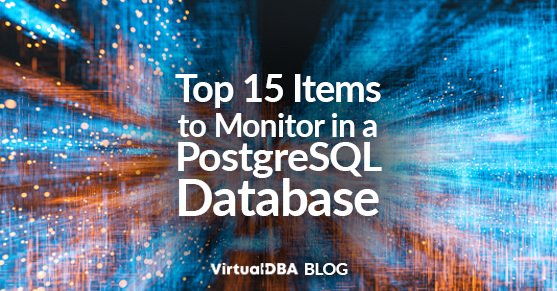PostgreSQL, commonly referred to as Postgres, is an open-source object-relational database management system (ORDBMS) known for its extensibility and compliance with SQL standards. It has been actively developed for over 35 years and has earned a solid reputation for reliability, feature robustness, and performance2.
The latest PostgreSQL Global Development Group updates include versions 16.2, 15.6, 14.11, 13.14, and 12.18, released on February 8, 2024. These updates addressed a security vulnerability and fixed over 65 bugs reported in the preceding months. If you’re using GIN indexes, it’s recommended that you rebuild them after updating to this release.
Monitoring a PostgreSQL database involves monitoring various aspects to ensure optimal performance, reliability, and security. Here are some of the top items that should be monitored.
- Database Size: Track the size of your databases, both individually and collectively. This helps in capacity planning and identifying potential issues like runaway growth or unnecessary bloat.
- Queries and Query Performance: Monitor slow, long-running, and frequently executed queries. Identify which queries are consuming the most resources and optimize them accordingly. Tools like pg_stat_statements, an extension that can easily be added to your system, can help in this regard.
- Connections: Monitor the number of active database connections. Excessive connections can degrade performance and even reach connection limits.
- Locks and Deadlocks: Monitor for lock contention and deadlocks, as they can lead to performance bottlenecks and application timeouts. PostgreSQL provides views like pg_locks and pg_stat_activity to help with this.
- Index Usage: Monitor index usage to ensure that your queries are using indexes efficiently. Only used or utilized indexes may need to be removed or optimized.
- WAL (Write-Ahead Logging) Activity: Keep track of WAL activity to ensure your database keeps up with write operations. Monitor the WAL file size and checkpoint activity.
- Replication Lag (if applicable): If you’re using streaming replication or logical replication, monitor replication lag to ensure that standby servers are up to date with the primary server.
- Table and Index Bloat: Monitor for table and index bloat, which can occur due to excessive updates and deletions. Regular vacuuming and analyzing can help mitigate this issue.
- Hardware Metrics: Monitor system-level metrics such as CPU usage, memory utilization, disk I/O, and network activity. These metrics can help identify hardware bottlenecks and capacity constraints.
- Error Logs and Alerts: Configure PostgreSQL to log errors and critical events. Monitor these logs for any anomalies or issues that require attention.
- Security: Regularly monitor for security-related events such as failed authentication attempts, privilege escalation attempts, and suspicious activities.
- Backup and Restore Processes: Monitor backup and restore processes to ensure they are completed successfully and within the expected time frame.
- Long-running Transactions: Identify and monitor transactions that run for an extended period, as they can cause bloat and impact database performance.
- Autovacuum Activity: Monitor autovacuum activity to ensure it effectively manages table and index maintenance tasks.
- System and Database Health Metrics: Keep an eye on metrics related to system and database health, such as uptime, database connections, and replication status.
Regularly monitoring these aspects of your PostgreSQL database can help ensure its smooth operation and performance optimization. Various monitoring tools and frameworks are available to assist this process, such as pg_stat_activity and pg_stat_replication.
PostgreSQL Database Monitoring with XTIVIA
Besides the above monitoring, XTIVIA can create a health report that can be used to monitor the CPU/memory over time and make recommendations on database parameters. Below are some examples of other projects or tasks XTIVIA can do for you:
- Vacuum stats – Improve vacuum parameters and verify the health of vacuums.
- Track top SQL and slow SQL.
- Inform the development of application errors seen in database error logs.
- Track the busiest tables and largest tables.
- Migrate data from on-prem to Azure, AWS, Google Cloud, etc., to change hardware or do an upgrade.
- Migrate data from on-prem to on-prem to change hardware or for an upgrade.
- Rebuild indexes, execute, and improve ddl (data dictionary language) and dml (data manipulation language).
- Improve vacuum parameters and verify the health of vacuums.
- Add encryption to your database and data pathways.
- Tune SQL and help developers mitigate database upgrades.
Conclusion
In conclusion, the ongoing development and recent updates to PostgreSQL continue to enhance its reputation as a robust, reliable, and highly compliant ORDBMS. With tools like pg_stat_statements and services offered by companies like XTIVIA, database administrators can ensure optimal performance, security, and strategic capacity planning, thereby maximizing the benefits of their PostgreSQL deployments.
Learn more about our PostgreSQL 24/7 Support and Managed Services.
For more information or any questions, please contact us.

